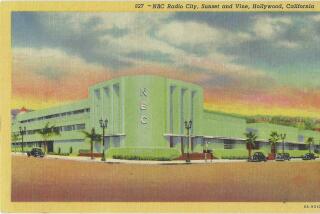For TV Outlet Owner, 6-Year Wait for FCC OK Nears End
Any day now, John Willkie expects to hear word that, after six years on a bureaucratic roller coaster, he is officially a member of the television industry.
In 1984, Willkie and his partner, Karl Fackler, applying as Civic Light Television, won a lottery for the license to operate a low-power television station in San Diego, Channel 63. Before they could pop champagne corks, though, it became clear that actually getting the station on the air would be a Sisyphean adventure, a living education in the workings of the Federal Communications Commission.
The 36-year-old Willkie, a free-lance reporter and computer consultant, even moved to Washington in 1982 and worked odd jobs while he tried to shepherd the station’s application through the process. He and Fackler have spent more than $20,000 on the project, Willkie estimates.
“I’ve gotten used to the slow pace of the FCC,” Willkie said. “If I had known that it would take so long, I would have been kicking and screaming from Day One.”
The FCC established guidelines for weak-signal stations in 1982. In sharp contrast to the powerful signals of regular broadcast outlets, the weaker signals can be picked up only within 15 to 25 miles of the transmitter tower. The idea was to open up the airwaves for a wider variety of community-oriented programming, to bring in people and organizations without traditional television-ownership backgrounds.
UCSD and the Basic Economic Education Foundation, a local nonprofit educational group headed by perennial political candidate Floyd Morrow, were also among the organizations that won the chance to operate low-power channels in San Diego.
In fairness, Willkie points out that the FCC isn’t exactly the unyielding bureaucracy it is often thought to be.
“The (low power) stations were so new, nobody knew what was going on,” Willkie said. The biggest hurdle was the government of Mexico. The new signals in the United States close to the border, which might interfere with Mexican signals, had to be cleared by the Mexican government.
The first San Diego low-power station to hit the airwaves was KBNT-TV (Channel 19), which went on the air Jan. 1, programming to the Latino community. Its transmitter is on Mt. Palomar, which made it easier to avoid the direct influence of the Mexican government.
The United States and Mexico didn’t even agree on guidelines for processing the applications until 1988, and then the applications didn’t exactly rocket forward.
Last week, however, the Mexican government finally gave approval for Channel 63 and the UCSD signal, which will be Channel 35, besides formally approving Channel 19. There are still some technicalities involved, but it seems likely that the FCC will finally approve construction permits for channels 63 and 35.
It could be a matter of days, although “I think I wouldn’t want to guarantee it,” said Keith Larson, head of the FCC’s lower-power division.
The notifications don’t affect the status of Channel 17, the Basic Economic Education Foundation station, which boldly thought it would be able to go on the air earlier this year. The station, which hopes to air programs targeting a variety of ethnic communities, hired a staff and started taping local events.
But problems with the Mexican government finally prompted the station to switch its transmitter location to a spot near Poway. Now, it is changing its application and hopes to be on the air within 60 to 90 days, although FCC’s Larson was not as optimistic.
Once Willkie receives his construction permit, he hopes to gather a crew of investors with the goal of putting Channel 63 on the air by next summer. He wants to program local news programs and documentaries, besides entertainment shows and movies. He wants to be “somewhat innovative and youth-oriented,” but he admits he’s not as youthful as when he first started the project.
“I’d like to grab a small but significant viewership with television fare that is not currently available,” Willkie said.
In a sense, that was the goal for low-power television, the reason the system was established in the first place. That audience could be extremely significant if cable systems pick up the low power channels (KBNT is carried by most local cable systems).
Willkie said the cable systems won’t be required to air Channel 63, but persuading them to carry it is one of his new goals, meaning he will start working his way through a whole new labyrinth of bureaucracies.
Where was Stan?
On Election Night, the biggest event of the year for television news, KFMB-TV (Channel 8) main anchorman Stan Miller was basically a non-player. He was based in the studio, and didn’t say more than two words about the election the entire night.
Of course, the Channel 8 phone lines weren’t exactly jammed with callers asking for Stan’s insight into the pesticides initiative, but it was highly unusual for a station’s main anchor to be uninvolved in the biggest television news event of the year.
KNSD-TV (Channel 39) even managed to get Denise Yamada involved in the election, having her report national results from the studio. Television loves to use events such as Election Night to position its anchors as Serious News Hounds. But Miller was relegated to reporting on the L.A. fire, while Susan Roesgen chatted up the politicians at Election Central.
“It wasn’t that big of an issue here,” said Channel 8 Managing Editor Marty van Housen. “The producers decided who would be where.”
Good, tactful answer. But it doesn’t address the tension behind the scenes or reports that Miller may be dropped from the key 5 p.m. newscast.
The afternoon talk show at Channel 8 is still officially on hold. New equipment was ordered, but a staff hasn’t been hired and management has yet to announce a start date. . . .
KNSD-TV (Channel 39) has been running ads promoting the schmaltzy “Personalities,” prominently featuring anchorman Charlie Rose. Unfortunately, Rose left the show weeks ago, citing the disappointment with the show’s preponderance of tabloid stories. The Channel 39 promotion department apparently didn’t get the word (or got it too late). . . .
Viewers who read the reviews of Channel 10’s “Ask the Media” program may have been surprised by a recent Channel 10 letter segment which suggested that the station received nothing but glowing responses to the show, including one letter which even thanked the anchors for their on-air banter. “Thank goodness you don’t come across as plastic images,” the letter said. Channel 10 Editorial Director John Beatty said another segment included negative letters about the program. . . .
This month’s edition of Channel 39’s “Third Thursday,” scheduled for 6:30 p.m. Thursday, with the provocative title, “Just Say Yes,” will focus on the legalization of drugs.
More to Read
Sign up for Essential California
The most important California stories and recommendations in your inbox every morning.
You may occasionally receive promotional content from the Los Angeles Times.










